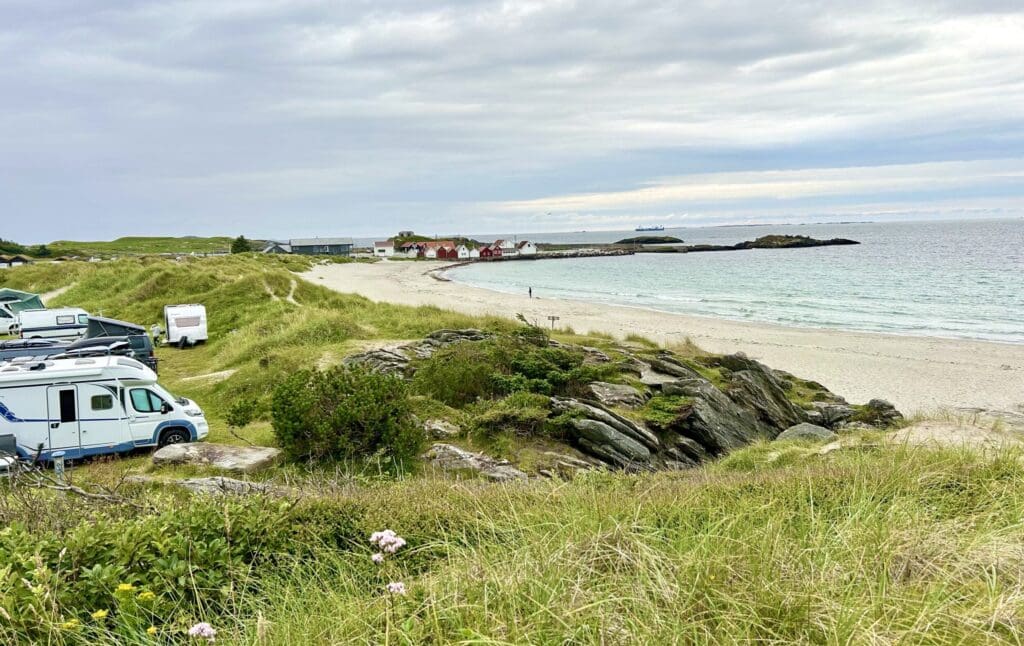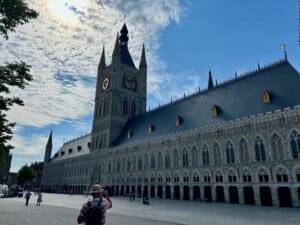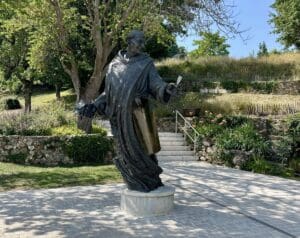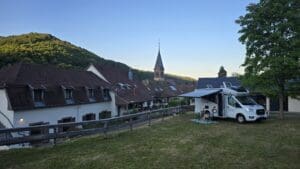After the Middle Ages and the Hansa in Bergen, which you can read more about hereWe now travelled to Haugesund and Viking Land. The weather was not really on our side in this summer city, which is why we quickly moved on to the oil centre of Stavanger.
Haugesund
Haugesund, located roughly halfway between Bergen and Stavanger, is probably best known as the most important place for the Norwegian Vikings. Just before you enter the city centre, you pass Haraldshaugen, which is said to be the place where Harald Hårfager is buried.
This era has of course been capitalised on and the city has both a Viking village with Norway's oldest royal throne and an annual Viking festival with hundreds of participants in full Viking regalia.
Today it is home to Norway's national monument.
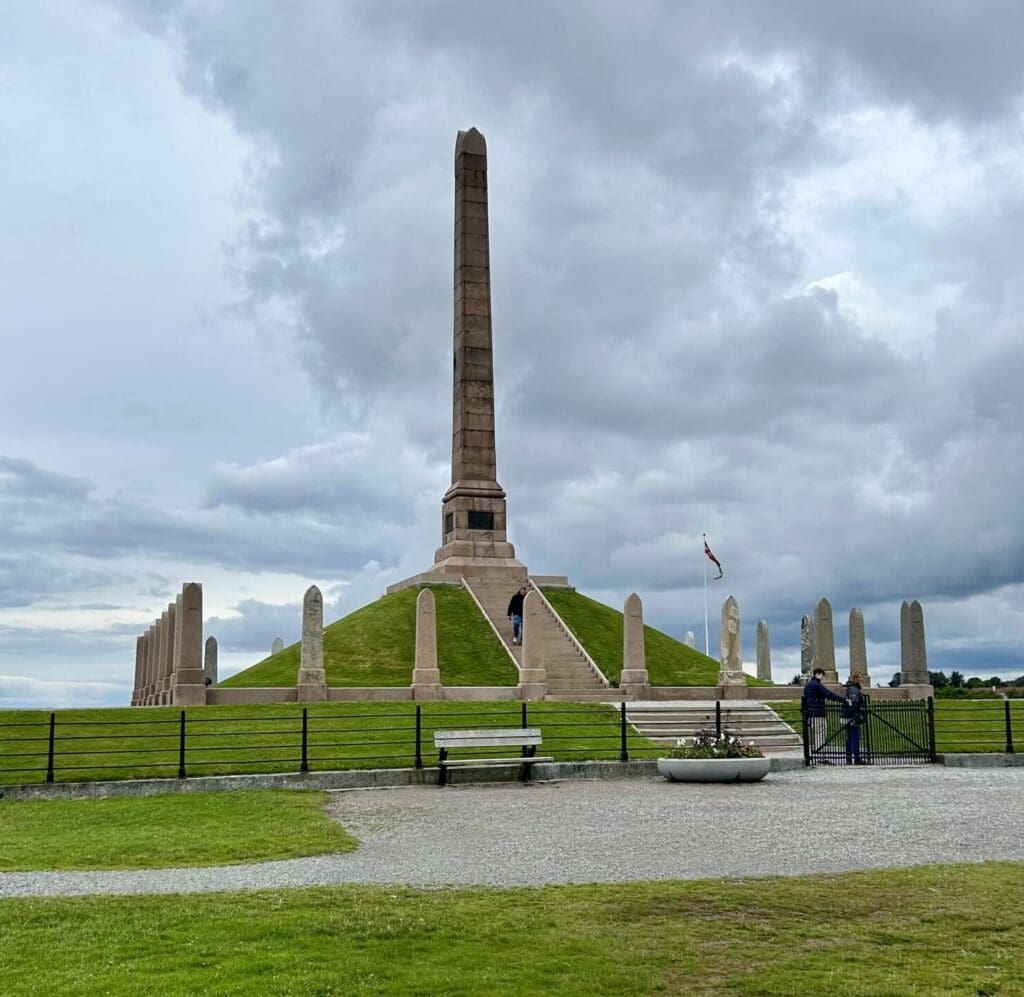
To get away from the dull weather, we headed for the small pedestrian street through the centre which is full of small shops of all kinds. I immediately fell for the odd gem Krimz Krams where the name speaks for itself. Here they sell everything you didn't know you needed, and maybe even a lot of things you really don't need, but a fun shop anyway. We also found exciting street art along the walls.
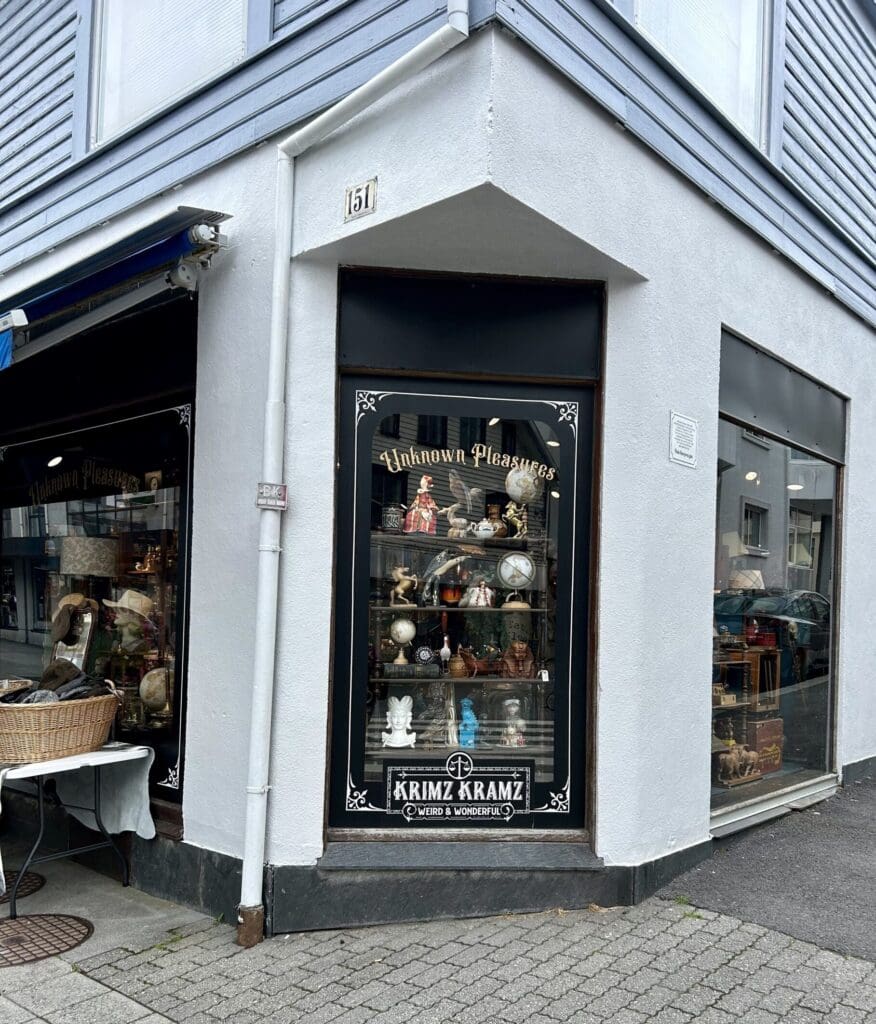
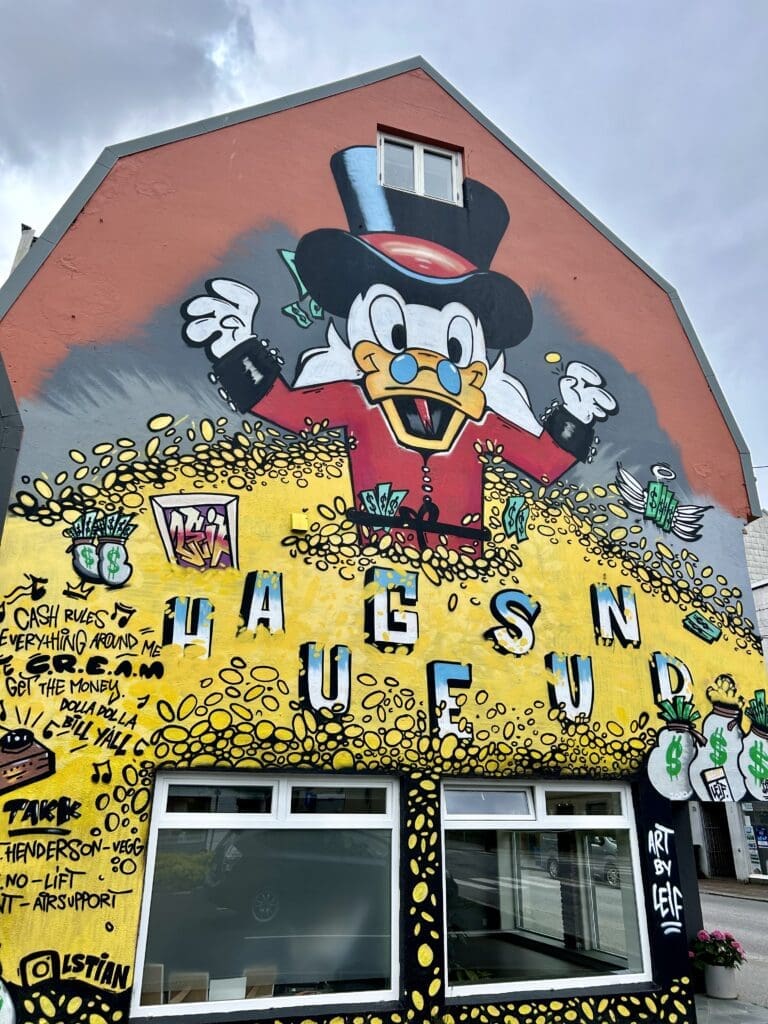
What we unfortunately completely missed and which will have to be saved for another occasion is the world's only statue of Marilyn Monroe. The statue was created by sculptor Nils Aas, whose work includes the statue of Ibsen in Bergen. So how did a statue of one of the world's most iconic women end up in Haugesund? Because Marilyn's father Martin Edward Mortensen was from here. It would have been fun to see, but unfortunately we only heard about it after we left town.

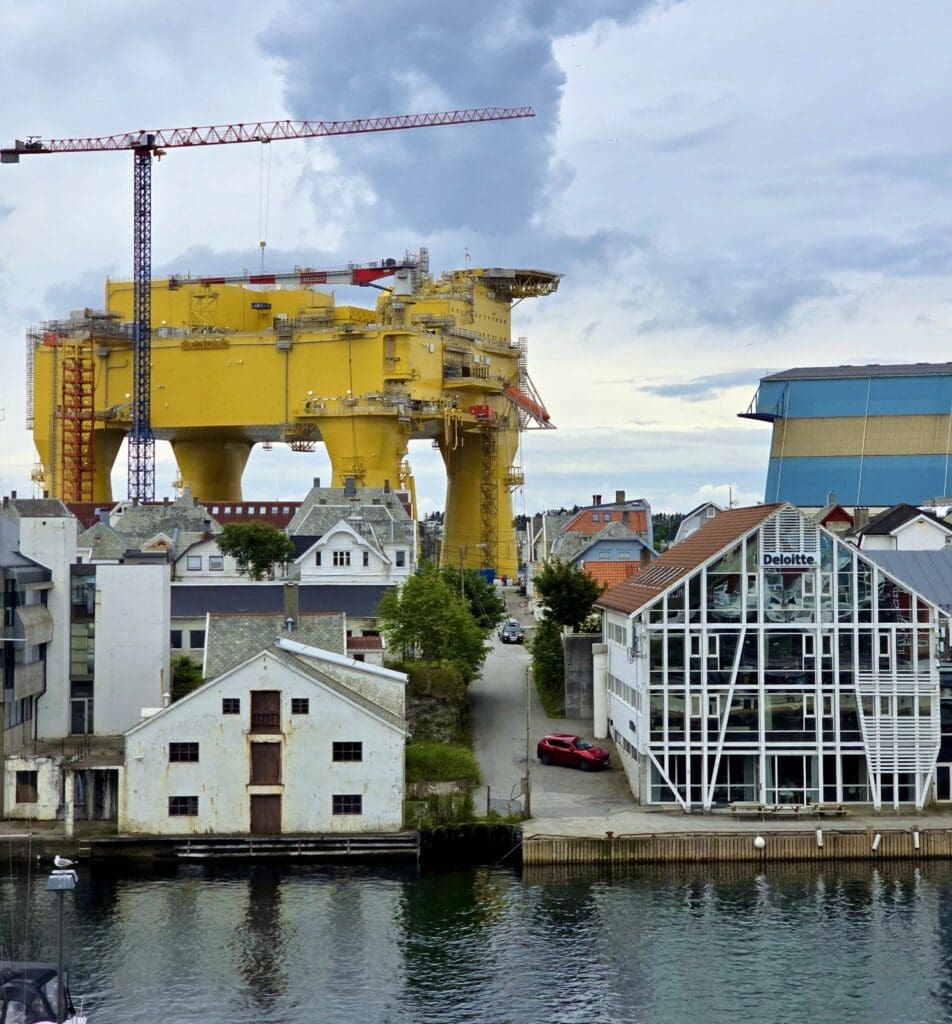
We strolled further down the harbour promenade, which is certainly more lively on sunny days. Now it was almost a bit deserted but at least we saw an oil platform standing in the harbour. You really get a perspective on how big the platforms are when you see them so close.
Stavanger
Stavanger, with its colourful houses and beautiful location, is so far our favourite city in Norway. Neither of us have been here before and we both thought the city was super nice. We would have liked to stay longer but after a series of bad experiences with pitches in Norwegian cities, we had booked ourselves into a beach campsite outside the city. We only had one afternoon in Stavanger and it was important to step on to see as much as possible.
Like the other coastal cities in Norway, Stavanger has a harbour promenade with old harbour warehouses. Since we had just been to Bergen, where one of the city's major characteristics is the harbour promenade, we were not so impressed by this part of Stavanger. We therefore chose to just quickly pass by to instead investigate what else there was to see in this beautiful city.
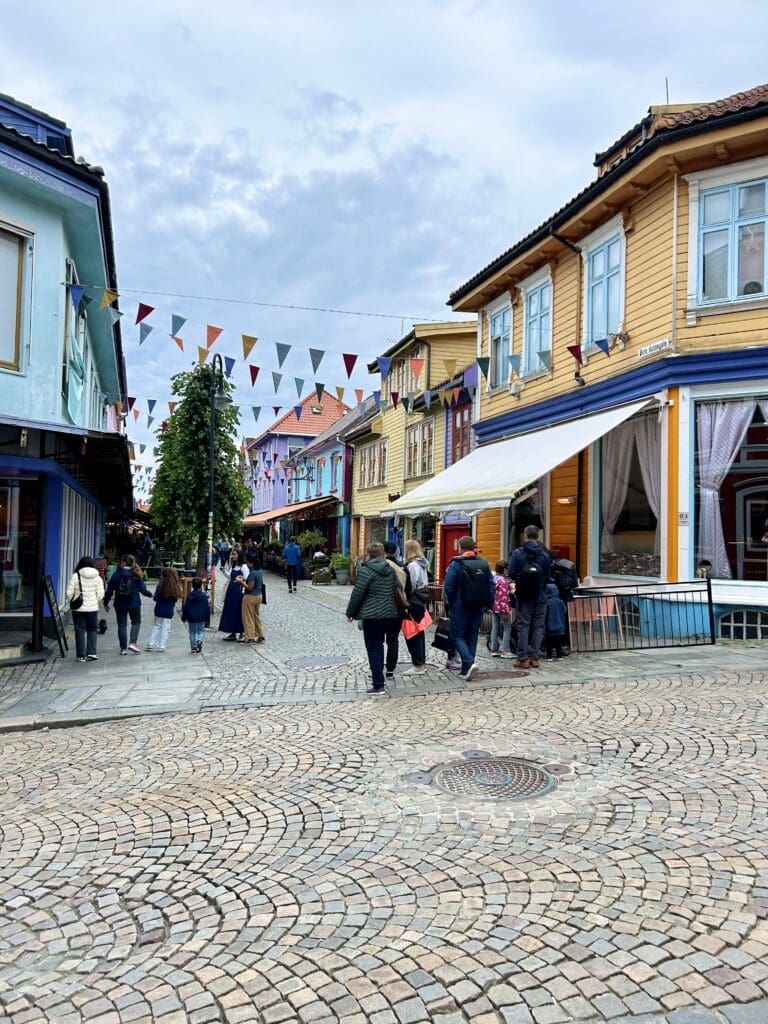
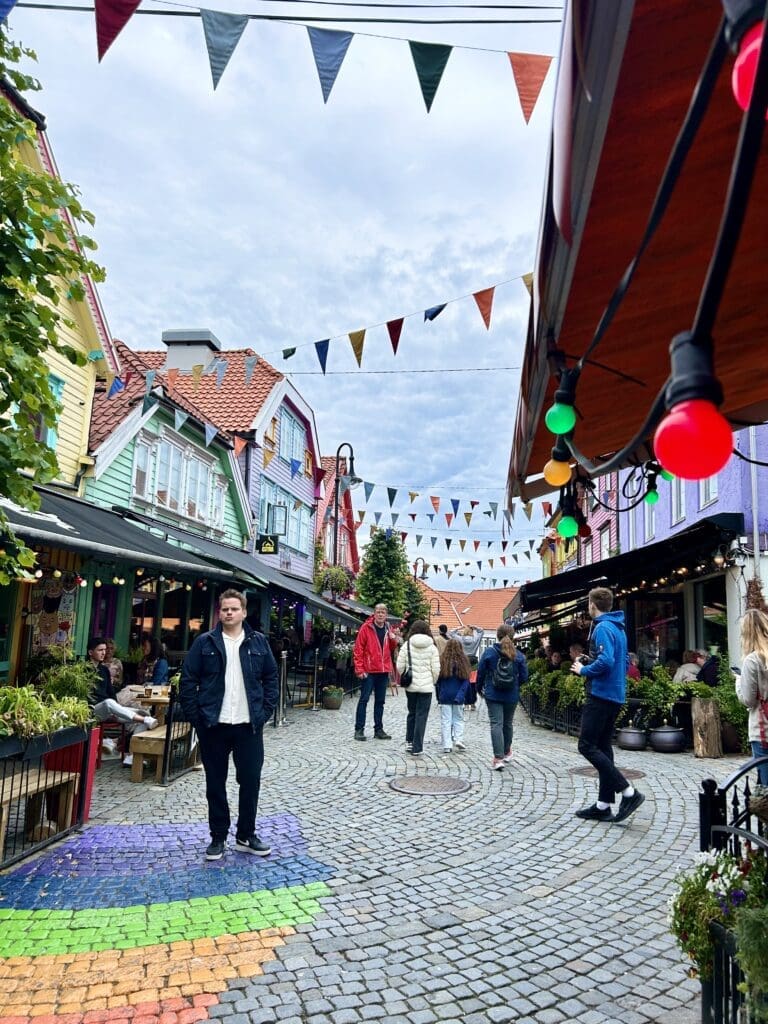
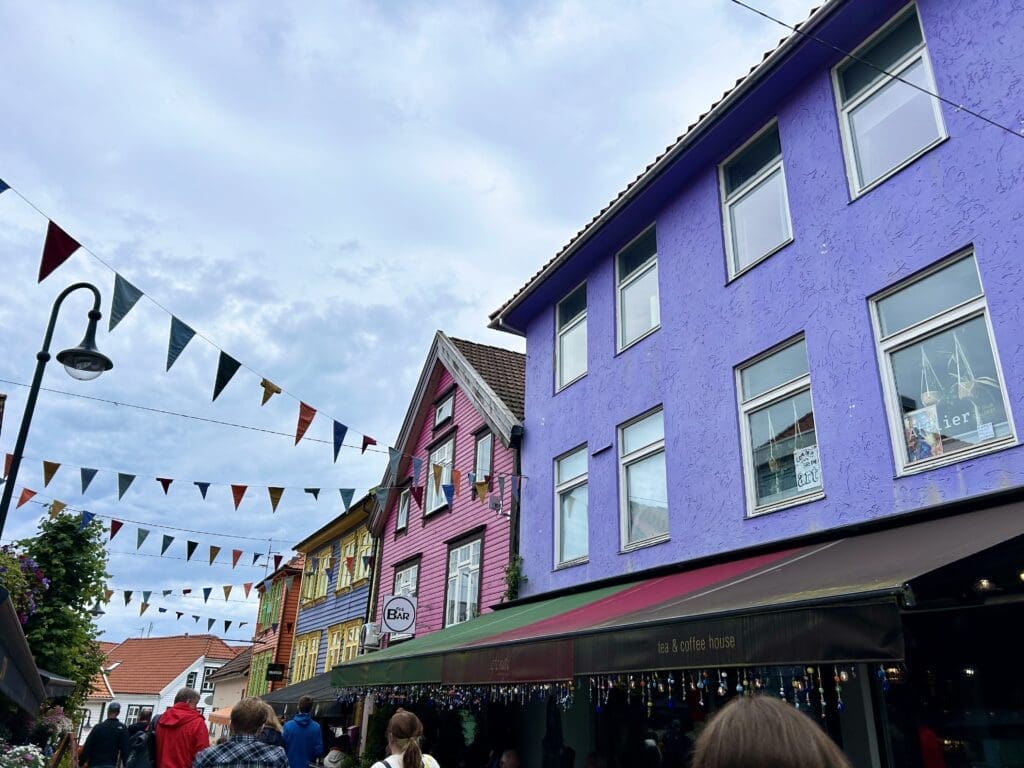

Just one block in we found streets with colourful houses, pennants and lots of life and movement. Finally, we got a little summer feeling despite the somewhat harsh weather. The main street Øvre Holmegate is even called Fargegate because of its colourful houses and you get happy just by passing here. The fact that there are lots of cafés, restaurants and shops in the neighbourhood doesn't make it any worse. Speaking of cafés by the way, Stavanger has six coffee roasters, that alone is a reason to come back.
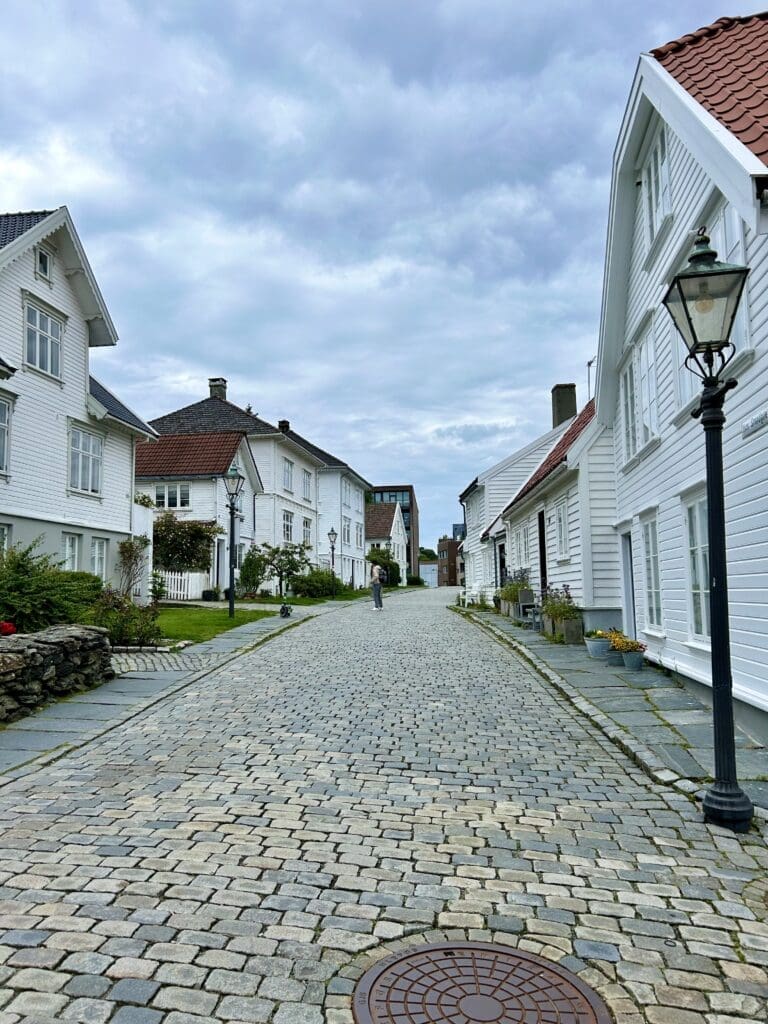
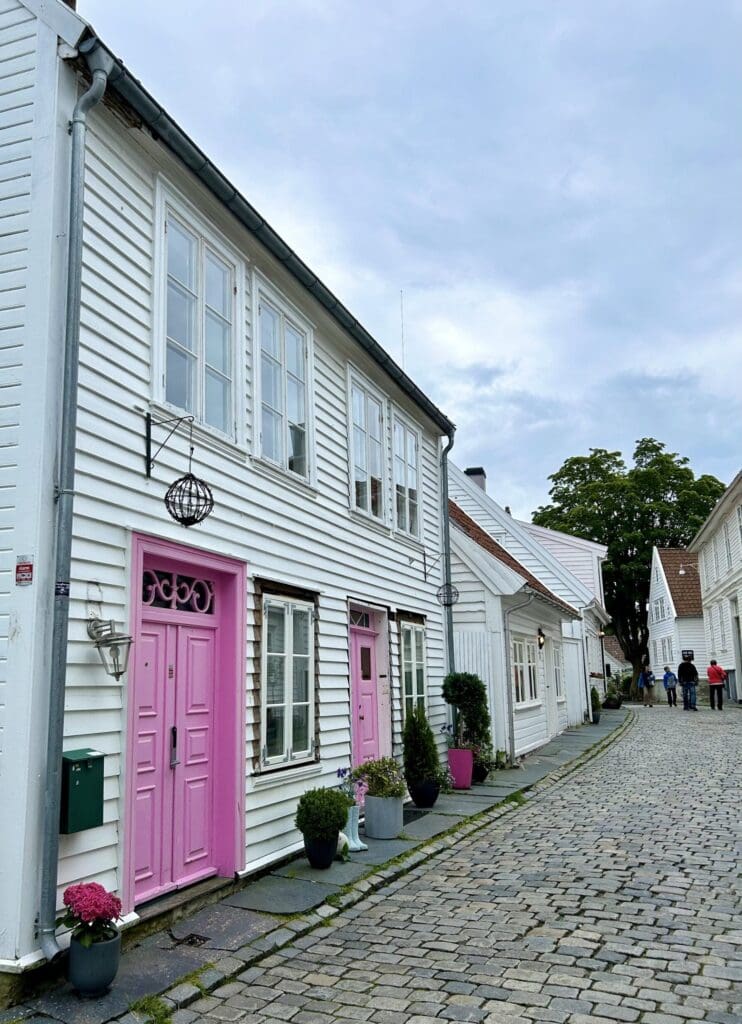

In direct contrast to Fargegata, you have Gamle Stavanger, where all the houses are white and the gardens are in impeccable condition. It's an incredibly beautiful and picturesque area where farmhouses, art galleries and craft shops are all intermingled.
On your way back to the city centre, you will pass Byparken and the cathedral, which is Norway's oldest cathedral. Built in the 12th century, the cathedral has been closed for renovation for several years but will reopen in autumn 2024.
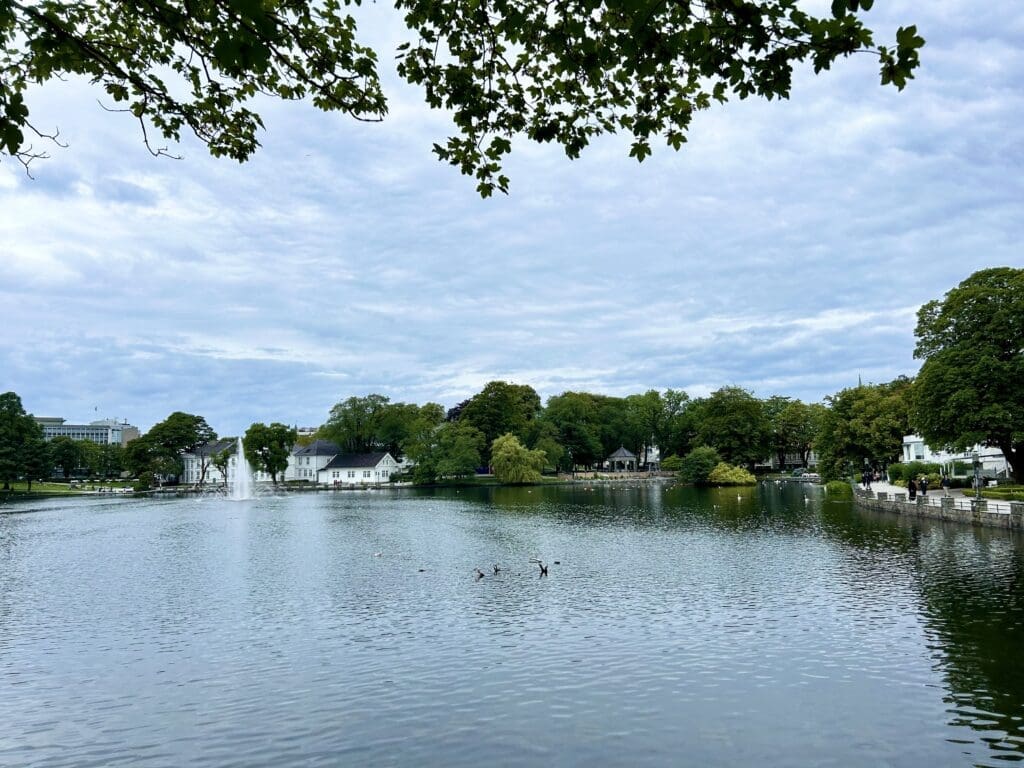

I read somewhere that Stavanger is the fastest growing city in the Nordic region in percentage terms and that this is largely due to oil production. After our trip through Norway, you realise that oil has had a huge impact on the country's development and economy. If you are curious about oil, there is the Norwegian Oil Museum, unfortunately we did not get here. Regardless of what you think about oil, it is still interesting to see its impact on the country and it would have been interesting to visit the museum but that will be another time.
Now it was time to move on to the beach and Ølbergs camping where we would park the car for the night. However, we have already planned for a trip back to southern Norway and Stavanger. During this trip, we have mostly made quick stops to see where to go another time. We live so close to the Norwegian border and there is so much to see here that we will certainly take many trips here.
